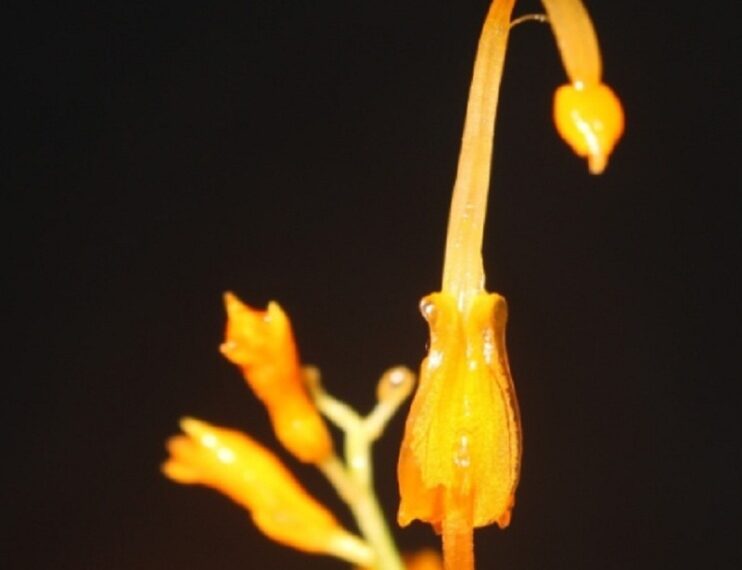SHILLONG: Researchers have discovered two new ginger species with flowers that look like graceful ballerinas in Meghalaya‘s double decker living root bridge area.
They are called “dancing girls” due to the unique appearance of flowers that look like ballerinas with bowed heads and outstretched arms that appear to “dance” in the wind.
The species, Globba tyrnaensis and Globba janakiae, were found by researchers from the Indian Institute of Science Education and Research (IISER) Bhopal— Vinita Gowda and Ritu Yadav— during their fieldwork in the East Khasi Hills district in August and September 2022.
Globba is a genus of flowering plants in the ginger family (Zingiberaceae), which is notable for its small, ornamental plants with delicate flowers. These plants are commonly found in tropical regions, particularly in Southeast Asia, India, and the Eastern Himalayas.
The first species, Globba tyrnaensis, was found in the famed Double Decker Living Root Bridge area of Tyrna village, located in the East Khasi Hills district, at an elevation of 731 meters.
A smaller population was also identified near Thangkharang Park in Cherrapunji. While this species shares similarities with Globba orixensis and Globba macroclada, it is distinguished by its short inflorescence, orange flowers, and large anthers. The plant’s bulbils, found throughout its inflorescence, help it to spread and grow.
The species gets its name from Tyrna village in Cherrapunji from where it was found.
The species is terrestrial, growing in the shaded understory of forests. The region’s unique climate and high rainfall create the perfect moist environment for Globba tyrnaensis to thrive. Its flowers attract bees, contributing to the local ecosystem.
However, with only two known populations covering approximately 400 square meters, the species has been informally classified as endangered, according to International Union for Conservation of Nature (IUCN) guidelines.
The species faces threats from habitat disturbance, and further conservation efforts are needed to protect it from extinction.
The second species— Globba janakiae—was also found in the Double Decker Living Root Bridge area of Tyrna village in Cherrapunji. But its population is significantly smaller, with fewer than 10 mature plants recorded.
Morphologically similar to Globba orixensis and Globba macroclada, Globba janakiae differs in its shorter inflorescence and the absence of inflorescence bracts.
The flowers are orange, and the species has heart-shaped labellum structures with small horn-like appendages (cornicula), which give it a distinct appearance. Like Globba tyrnaensis, it also produces bulbils.
ALSO READ: Meghalaya HC seeks update on implementation of traffic safety measures from state govt
Named in honor of EK Janaki Ammal, a pioneering Indian botanist known for her advocacy of native plants and opposition to deforestation, Globba janakiae has been assessed as critically endangered.
The species is extremely vulnerable due to its restricted distribution and the ongoing risks posed by habitat destruction.















